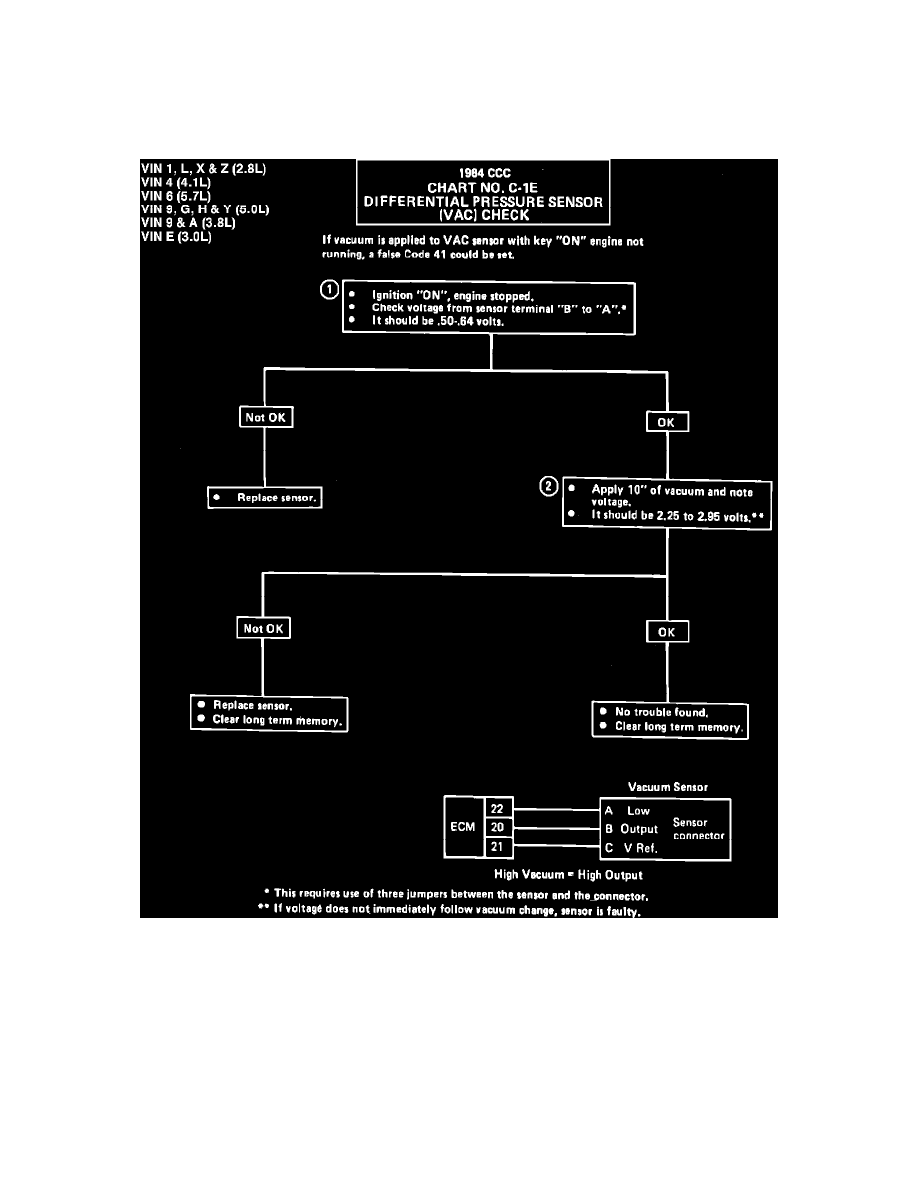Regal V6-231 3.8L Turbo VIN 8 4-bbl (1983)

-
High voltage decreases spark advance.
2. Check to see if the rate of change of the output VS change in pressure is correct--normal change would be about the middle of the range listed.
-
The voltage should change as soon as the vacuum is changed.
-
If it doesn't, it could result in detonation or a sag on acceleration which could also be caused by fuel or a restriction in the hose to the sensor.
Chart C-1E Differential Pressure Sensor (VAC) Check
Fig. 021 - Chart C-1E Differential Pressure (VAC) Sensor Check
CHART C-1E, VACUUM SENSOR CHECK
1.
This checks the output of the sensor. The vacuum sensor is a differential sensor that measures the difference in pressure between atmosphere and
manifold. The voltage output is opposite the MAP sensor. It supplies high voltage at high vacuum. Normal reading with engine stopped, key "ON"
is less than 1 volt, while at idle should be above 3 volts. High voltage increases spark advance, while low voltage reduces spark advance.
2.
This checks the rate of change of the output with vacuum. Again, the normal reading would be about in the middle of the range indicated. Also, the
voltage should change as soon as the vacuum changes. If it doesn't, it could result in detonation or a sag on acceleration. It could also be caused
by poor fuel or a restriction in the hose to the sensor.
